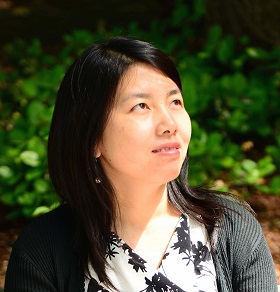
University of Washington, Tacoma , USA
Benefits:
This tutorial teaches participants to reconsider some commonly held design beliefs and routine design practices with a lens of cultural differences. It introduces strategies and techniques to create engaging and empowering designs to bridge cultural differences in a globalized world at a divisive time.
Content:
Are simplicity and minimalism the universal design standards for interaction design? How can we avoid unintended stereotyping with user personas in daily design practices? What AI algorithms and design mechanism made “digital blackface” phenomenon on social media so popular? Why did Facebook's signup page remain a binary gender option for another five years after the 50+ gender options were introduced in 2014? Why were women’s voices used as default for digital assistants ranging from Apple’s Siri, Microsoft’s Cortana, and Amazon’s Alexa?
Cultural differences emerge from the various categorical identifications such as ethnicity, race, age, class, religion, gender, sexuality, and ability and manifests as ways of life. They provide design challenges because they are often regarded as a deficit or a threat to harmonious communication for understanding. Based on Sun’s longstanding work in cross-cultural, multicultural, and global design (2012, 2014, 2020), this tutorial shows that cultural differences are dynamic, relational, emergent, and contingent, and demonstrates ways of engaging cultural differences and turning communication deficits into generative design resources, as part of the social justice-oriented design.
In this interactive tutorial, a new design framework of discursive affordances (Sun &Hart-Davidson, 2014; Sun, 2020) is used to trace the interconnectedness of grand narratives (such as ideologies and cultural institutions) and everyday interactions, and to uncover design and innovation opportunities. Discursive affordances stresses affordances as dialogic discursive relations. It connects critical design considerations for empowerment such as agency, structure, identity, values, ideology, and power on a macrosocial level with design implementations for efficiency and effectiveness out of concrete tasks and various modes of interactions on the micro level. Therefore, it connects macro-HCI with micro-HCI (Schneiderman, 2011). Visually rich social media design cases will be provided, and hands-on activities also follow for practice.
Design-minded HCI graduate students and practitioners and any HCII attendees who are interested in the topics such as critical design, design ethics, diversity and inclusion, global design, and cross-cultural design, and who are interested in empowering users for more inclusive communities and societies at this divisive time of the globalized world. They will learn a new design instrument and acquire a new design skill. Even people who don’t do design work regularly could still learn from this tutorial since design artifacts are everywhere in our daily lives.

Huatong Sun
Full Professor in cross-cultural, multi-cultural, and global UX design at University of Washington Tacoma. I teach and practice on how to design and innovate for usable, meaningful, and empowering technology in this globalized world to bridge cultural differences. Multi-award-winning book author of “Cross-Cultural Technology Design” (2012) and “Global Social Media Design” (2020) with Oxford University Press, I write for public media including Fast Company and The Conversation. My community-engaged teaching innovation with marginalized user communities made me 2022 Jay R. Gould Award Winner for Excellence in Teaching from the Society for Technical Communication (STC) and the Distinction in the Practice of Diversity and Inclusion Award Winner of the Association for Business Communication (ABC). This course is based on my longstanding research in cross-cultural, multicultural, and global design, which was given at CHI 2022 & 2023 and at other international conferences in multiple fields including IEEE Professional Communication Conference, ACM SIGDOC, STC Summit, and ABC.